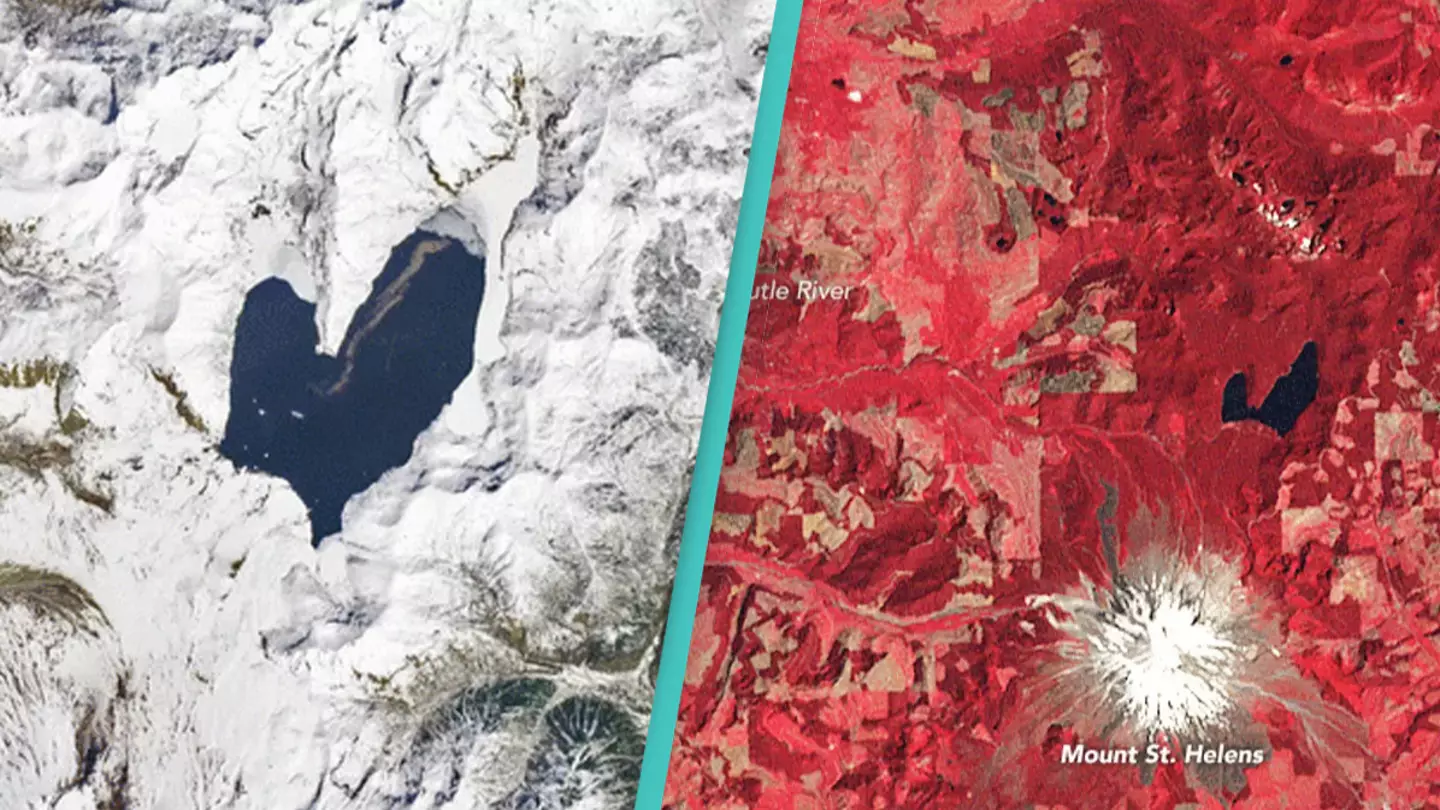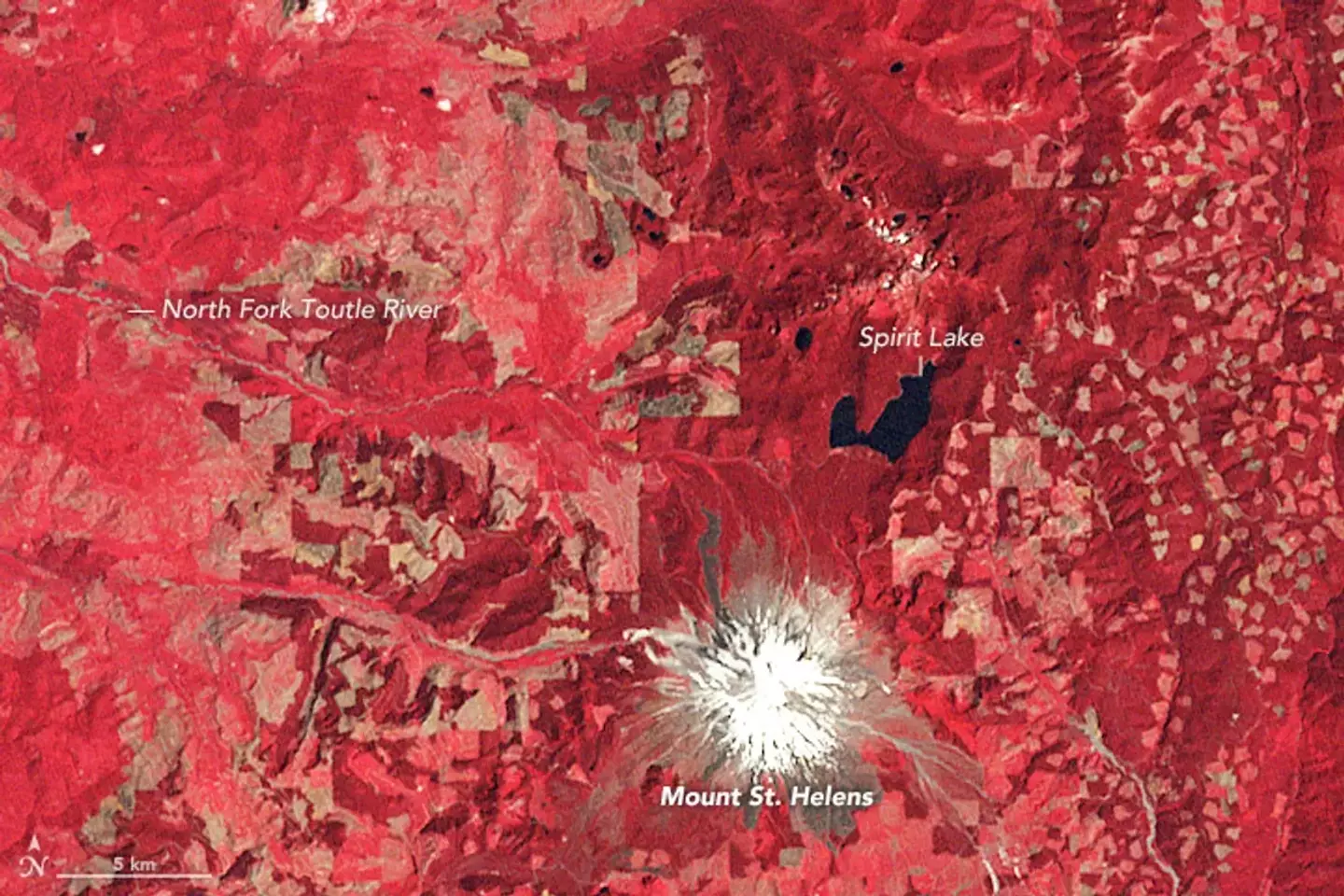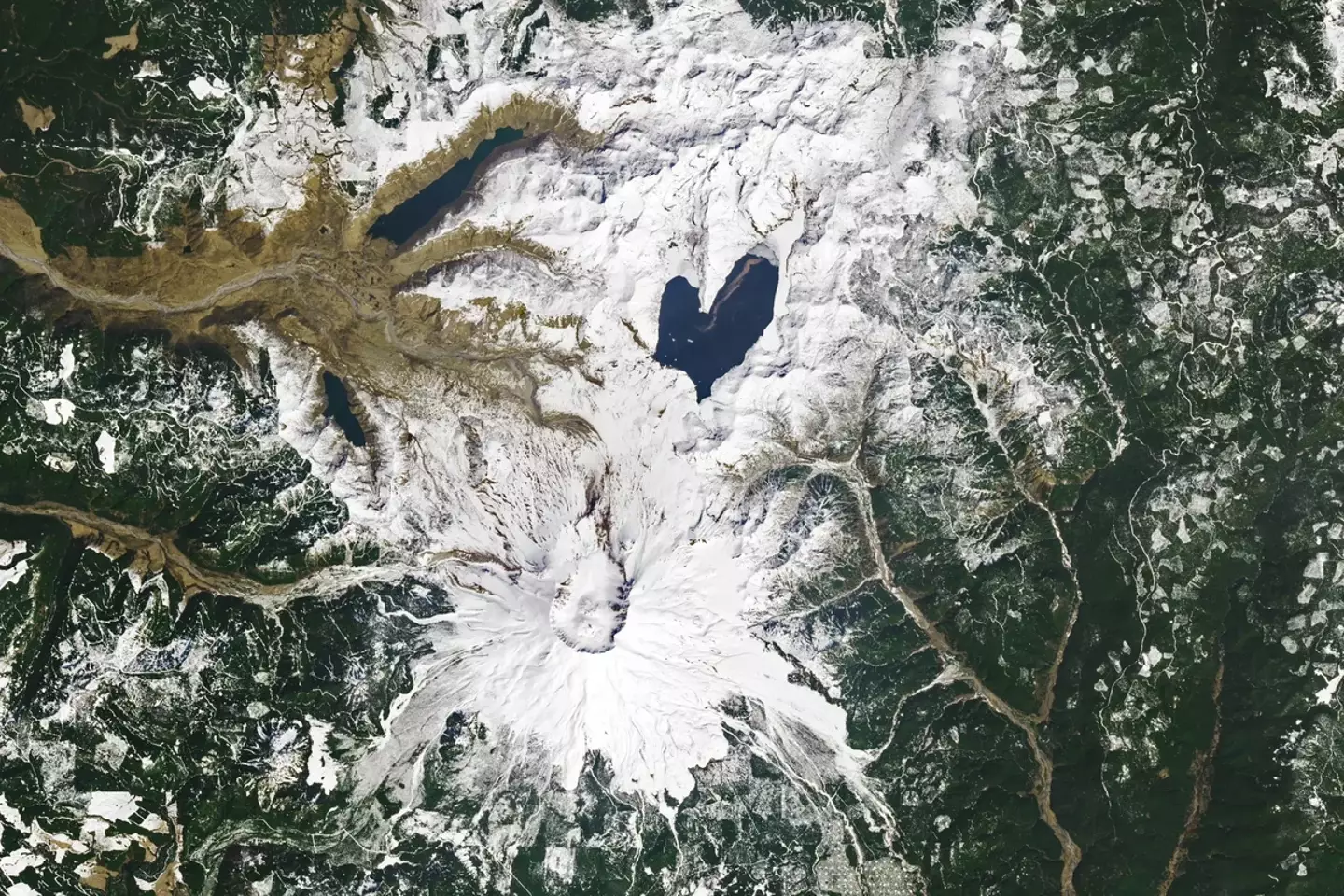
What looks like a happy little accident of nature is actually at the site of one the most destructive natural disasters in American history.
With Valentine’s Day just gone, you would be forgiven for thinking a lake in the rough shape of a heart is just a happy little world wonder.
Something your mom would likely share on her Facebook or family group chat.
Advert
But in actuality, Spirit Lake, in Washington holds a dark history.
Because it wasn’t until recently, geologically speaking that is, that it even looked like this.
Thanks to the wonders of satellite imagery, we know what it used to look like before the natural disaster that reshaped the local landscape in 1980.
The area was one a popular tourist destination and would see people swimming and fishing in the lake while they stayed at cabins and lodges in the local area.

But after the violent volcanic eruption of Mount St Helens on May 18, 1980, things changed.
Advert
According to the United States Geological Survey (USGS), the eruption was the most destructive in the history of the United States and it killed 57 people as well as change the environment.
“The eruption of Mount St. Helens caused loss of lives and widespread destruction in a matter of hours,” the USGS stated on its website.
What caused the lake to shift in shape was the fact that the eruption led to an increase in the surface elevation of lake. This elevation was by an estimated 60 meters which resulted in landslides and debris forcing the water into nearby land.
After the water gradually flowed back in on top of the volcanic debris, it created a new shape, a broader, more shallow and heart-shaped lake.

While this is in an interesting story, you would expect that it would return to being a tourist destination now with a morbid and fascinating story for guides to include.
Advert
However, access is limited to both fishers and swimmers as it is now preserved as a natural laboratory for studying the recovery of landscapes after volcanic eruptions, most notably its undisturbed log mat.
Speaking to NASA’s Earth Observatory, environmental engineer Jim Gawel explained why this was of particular interest.
“More lakes would have log mats, but often logs are removed for recreation and timber harvest,” he said.
“We would love to learn of other lakes in the world with large numbers of floating logs for comparison to Spirit Lake.”
Topics: Environment, Nature, US News, News